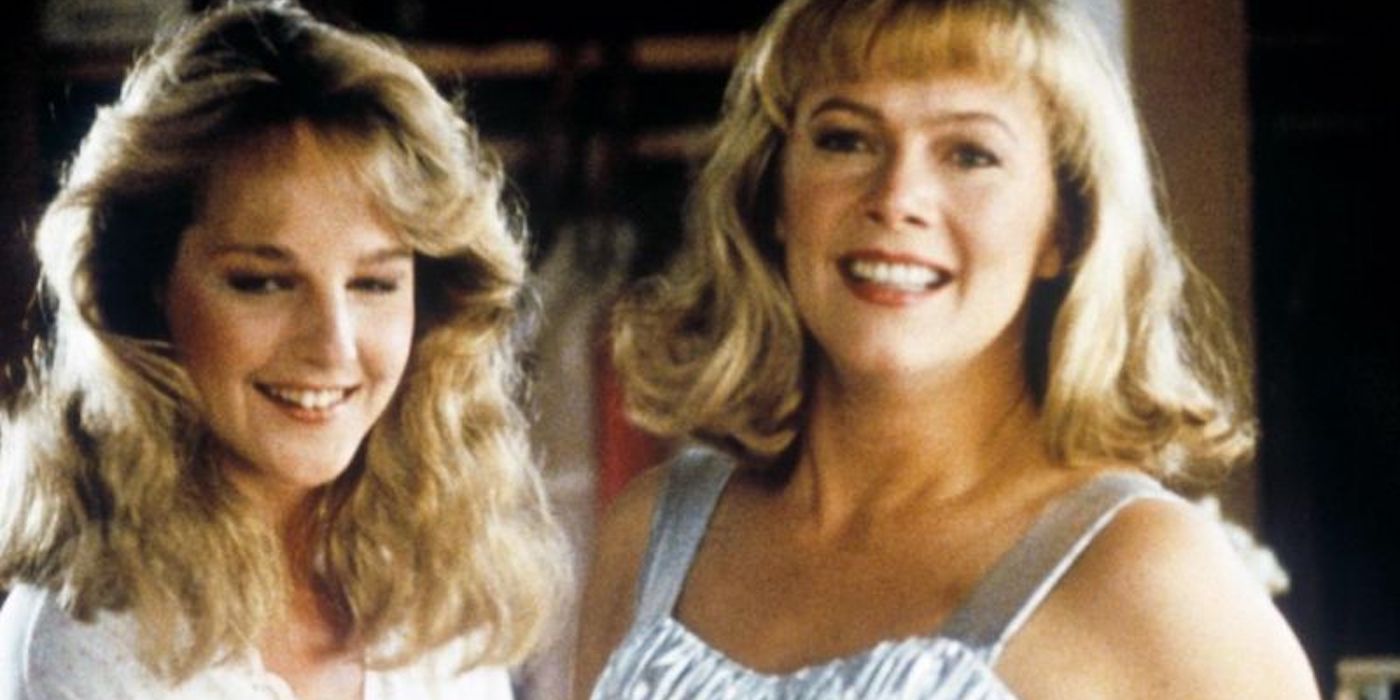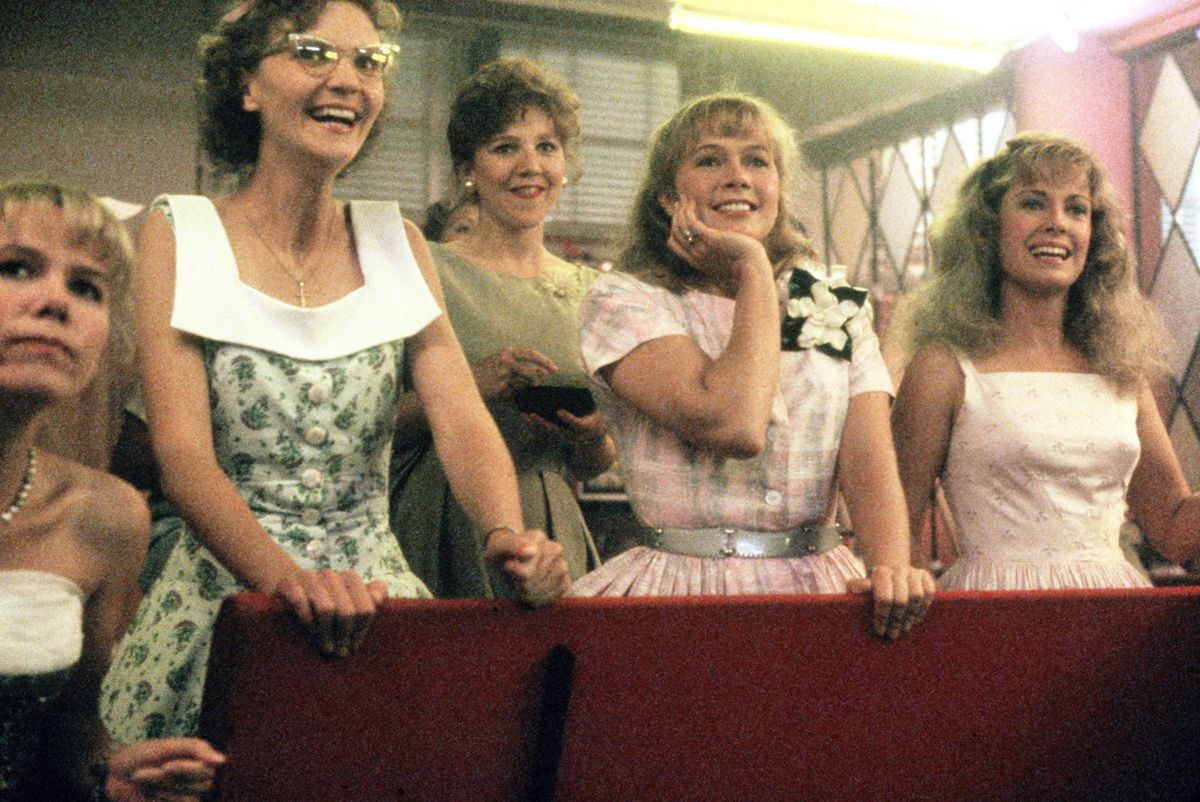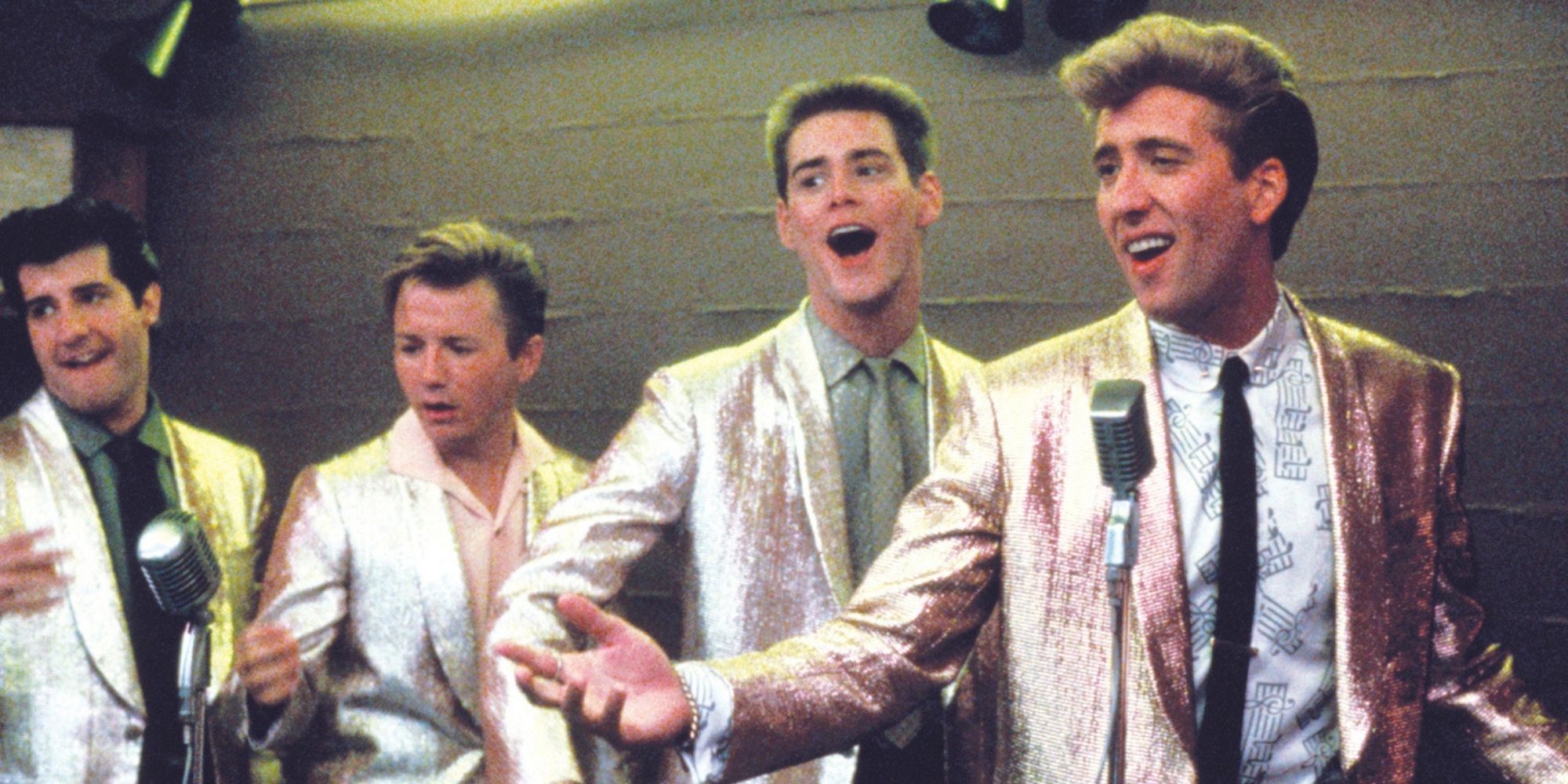A little over a year after the release of Robert Zemeckis’s genre-defining blockbuster Back to the Future, legendary auteur Frances Ford Coppola released the critically acclaimed suburban fantasy Peggy Sue Got Married, which reframed time travel storytelling as a subtle act of memory excavation rather than a scientific experiment of historical alteration. Focused on Kathleen Turner’s titular protagonist as she magically returns to her youth after passing out at her high school reunion, Peggy Sue Got Married immediately avoids prioritizing scientific jargon or overwrought exposition to explain Peggy Sue’s transition into the past; instead, the time travel experience at the film’s center more closely mirrors the self-investigation that George Bailey (James Stewart) encounters in the existential fantasy near the end of It’s a Wonderful Life than the urgent expedition from the 1950s in Back to the Future. By allowing Peggy Sue a second chance to rediscover why she fell for her husband and reconnect with family members that had passed away between the past and the present, Peggy Sue Got Married boldly alters the textures of time travel tropes to reinvent the genre as a gentle fantasy of small shifts rather than a genre exercise of epic proportions.
When Peggy Sue initially arrives back in her high school days in the 1960s after passing out at her high school reunion in the 1980s, Coppola treats the temporal transition with a confident sleight of hand, avoiding didactic explanations or generic expectations regarding the film’s use of time travel. Even as Coppola holds space in the narrative for Peggy Sue to question both why and how she returned to her life in 1960, her existential queries remain focused on addressing the regrets of her “present-day” memories of high school and rediscovering the magic of what actually occurred at the time, shifting the film’s interest away from the mechanics of time travel to accommodate for the interior experience of Peggy Sue’s renewed perspective of her younger self. In one of the most moving moment of the film’s first act, Peggy Sue’s return to her family home and reconnection with her mother and younger sister sees the protagonist almost immediately surrender to the magic of reliving her bittersweet memories within the perspective of her “present day” self, as she understands a future of familial loss and relational disconnection. Kathleen Turner imbues her enthusiastic greetings to her family with a genuine mournfulness, maximizing the power of her iconic voice to fuse feelings of dissatisfaction with her “present day” life and delight in returning to her youthful experiences. Similarly, when Peggy Sue takes a detour visit to see her grandparents in the film’s final act, Turner’s understated enthusiasm and bleary-eyed observation of new moments with her grandparents beautifully captures the tearful yet hopeful tone of time travel throughout the film, differentiating Peggy Sue Got Married from its subgenre peers through gentle fantasy rather than science-fiction structures.
While Peggy Sue’s emotional reconnection with her family provide an atmosphere of nostalgia without dipping into sentimentality, the protagonist’s reframing of the relationship with her soon-to-be ex-husband Charlie Bodell (Nicolas Cage) acts as a catalyst for complicating Peggy Sue’s reliving of the past. Playing Charlie with a cartoonish squeaky voice and a demeanor that straddles the line between teenage geek and musical heartthrob, Nicolas Cage playfully nuances an initially unsympathetic figure by revealing his incidental helplessness and unconditional optimism as the film progresses. From the sweet scene of Charlie playfully greeting the recently reawakened Peggy Sue as a vampire after her blood donation to the heartfelt performance for the record executive at the bar, Cage portrays Charlie as a tender yet thwarted figure who failed to meet his full potential as a musician, leading him to inhabit his worst nightmare of a mundane smalltown existence. Although Peggy Sue’s time travel experience allows her to unravel the threads that strangled her marriage to Charlie, the alternate temporality also illuminates many of Charlie’s motives and discontents, ultimately creating a more sympathetic character through comedic exchanges and empathetic connections. In a particularly hilarious reversal of midcentury gender stereotypes, Charlie questions Peggy Sue’s sexual advances in his signature squeaky voice, questioning why she switched from “if you love me, you won’t” to “if you love me, you will” in the span of a single week. Although the audience is completely aware of the irony that Peggy’s time travel places onto the sequence, the sincerity and sensitivity behind Charlie’s response reveals him as an initially faithful and caring character, poetically reversing the audience’s initial perception of Charlie as an unfaithful figure.
Perhaps the most inventive and effective aspect of the time travel tropes throughout Peggy Sue Got Married are the subtle changes that Peggy Sue enacts upon her own narrative, none of which lead to the dire consequences on the space-time continuum that populate the rest of the subgenre. From engaging in a brief romance with the mysterious beatnik Michael Fitzsimmons (Kevin J. O’Connor) to the primarily comedic discussions of time travel with the shy intellectual Richard Norvik (Barry Miller), Peggy Sue’s temporal alterations function as personal asides that both develop the protagonist’s personality and reframe her relationship with Charlie, all of which enhance the emotional impact of the film’s conclusion. Rather than taking time to toy with the overall arc of reality, Peggy Sue’s narrative remains a focused fantasy on a life that might have been in a manner similar to George Bailey’s fantasy in It’s a Wonderful Life, allowing the protagonist an alternative perspective on her personal trajectory from high school to the present day. By prioritizing the deeper meaning of mundane interactions and youthful conflicts, Peggy Sue returns to her “current” reality with renewed hope for potentially healing her wounded marriage to Charlie. Even more importantly, the titular character also discovers a newfound agency over her decisions and personal expression through addressing regrets from her past directly, setting Peggy Sue Got Married apart as a timeless treatise on self-confidence and self-discovery. By presenting time travel as a mechanism for nostalgic renewal and memory analysis, Peggy Sue Got Married effectively revises the storytelling structure of time travel as a magical realist tool for personal growth and positive perspective shifting.



